There’s a reason why the three-chord trick works so well and it has to do with music theory, or more specifically, diatonic harmony. Knowing this trick is essential for any songwriter, and provides you with a simple framework to use as the creative vehicle for your music-making.
The three-chord trick refers to an idea in music theory where a song, phrase, or musical idea is most likely to be based on the tonic, sub-dominant, and dominant chords (I-IV-V) of the major scale. These three chords can either work as the structural basis for a song or as an accompanying melody.
Explaining the Three-Chord Trick – Why It Works
The three-chord trick was a huge part of popular music for years, but it seems like we have moved away from this progression over the last few decades. Minor key songs are a lot more popular now.
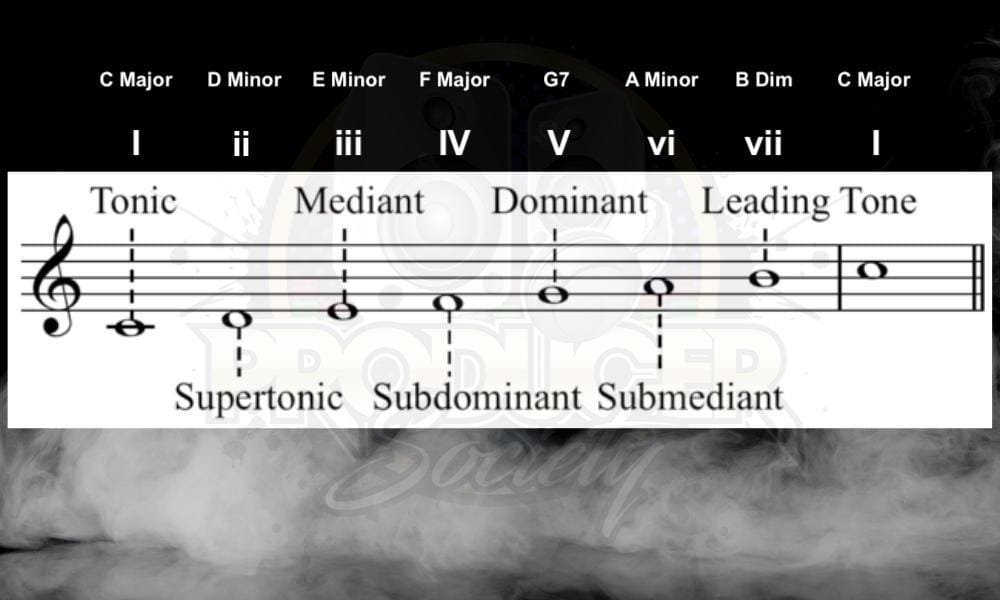
This is a very simple way to make great music happen. You start by playing the chord based on the first scale degree. Then you move to the chords built off the fourth and fifth scale degrees, and you have the basis of a great song.
This is really simple to do and highly recommended if you’re new to creating songs. Not only am I going to show you how to use them, I’m also going to explain why the 3-chord trick actually works. Here’s the first reason:
1) The Three Chord Trick Contains All The Major Chords in a Key

If you take the three chords: I, IV, and V of the three-chord tricks you’ll notice something very similar about them. Take the first, fourth, and fifth scale degrees from the key of C. You will have the chords C, F, and G. These are all the major chords from the key.
Because the three-chord trick has only major chords, you can play with confidence knowing that you won’t have to worry about chord quality. Major chords generally sound very stable. They will give your music a very familiar harmonic sound that all listeners can relate to.
This familiarity is common as these chords are the primary chords. They are sufficient to harmonize any note within the key which is very useful. Other chord qualities include minor, augmented, and diminished.
Tip:
Use chord extensions, alterations, inversions, and different voicings to make boring progressions sound way more interesting. For instance, try using a Cmaj9 instead of a C Major, or an Fmaj7 instead of an F Major. You can get even more advanced and start using 3rd inversion seventh chords (starting on the 7th note of the chord instead of the root).
These chord qualities are great but require more theory knowledge to use correctly. In other words, using chords outside of the three-chord trick is a little more complicated.
In major keys, only major, minor, and diminished chords exist in three-note voicings. You can get a lot just from using the major chords using the three-chord trick, which is something I first learned about in the Punkademic music theory course with the All-Access pass that gives you the whole course.
2) The Dominant (V) Chord Wants to Resolve to the Tonic
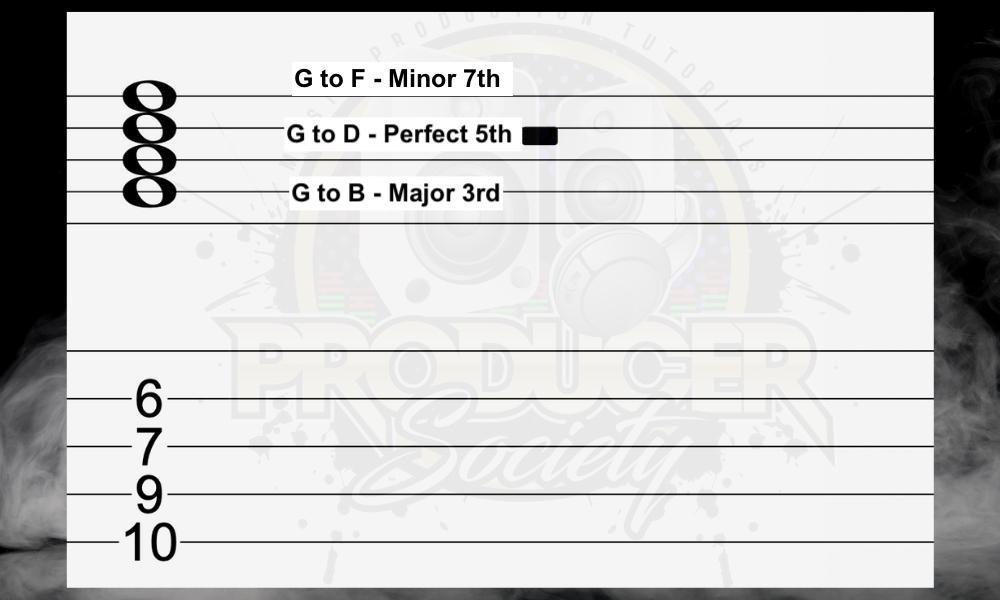
Going from the dominant five-chord to the tonic, or one chord is a great way to resolve your phrases. Ending a song on the one chord is a standard ending.
The reason the dominant chord resolves so well to the tonic is that the dominant chord contains the leading tone to the tonic (also called the tonic).
If you are in C, the dominant chord is G. This chord has the notes G, B, and D. B naturally leads you to C which is the one. There are other reasons as well, a few of which I’ve pointed out in the image above.
The Dominant 7th Needs to Resolve Because of the Tritone
![Diminished 5th - What is the Three Chord Trick [ANSWERED]](https://producersociety.com/wp-content/uploads/2022/04/Diminished-5th-What-is-the-Three-Chord-Trick-ANSWERED.jpg)
One is that there is a tri-tone between the 3rd and 7th interval of a dominant 7th chord. A tri-tone is a combination of 3 whole tones next to each other, and it produces very strong dissonance. This dissonance is begging to be resolved.
The Dominant 7th Is A Major-Minor Chord – It’s “Uneasy”
The next reason why the Dominant 7th wants to move toward the tonic is that, in simple terms, it is a major-minor chord. There is a major third interval, a perfect 5th interval, and a minor 7th interval.
Because of the mismatched qualities, it produces a sense of uneasiness that needs to be resolved. We can’t sit on this chord because of this dissonance.
Moving from the Dominant 7th (V) to the Tonic
This, as Jacob Collier says, is “home” figuratively speaking. Your song tells a story, and the best way to tell that story is to resolve your dominant chord to the tonic. It’s the gravity of the music, which is where the notes tend to gravitate towards.
Musically speaking, every note needs to go somewhere. Try playing the C major scale and end it on B. This note which is the seventh, or leading tone, wants to resolve. Your ears will tell you that B needs to go to C.
3) The I-IV-V Chords Include All The Notes of The Major Scale
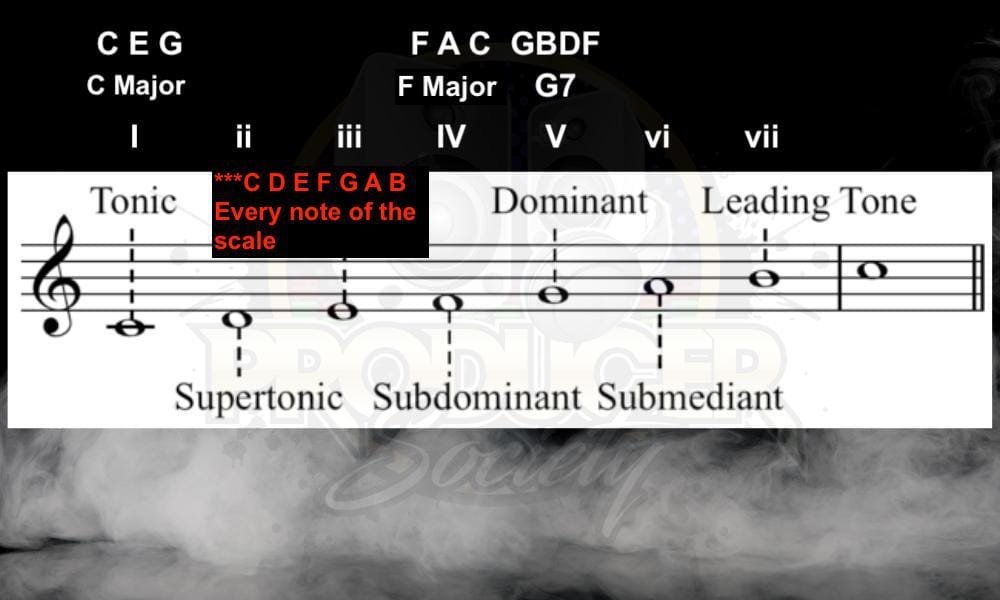
Let’s take the notes of the C major scale and move them around to our three chords. First, we have the C chords so the notes are C, E, and G. Then we have the F chord which is F, A, and C. Only one note is the same here, C. Finally, there’s our G chord which is G, B, and D.
This chord shares no notes with F (unless you use the G7), but shares the note G with the C chord. So, our note groupings are CEG, FAC, and GBD. If you reorder these notes you have C two times, D once, E once, F once, G twice, A once, and B once.
Regardless of how many times there are shared notes within the chords we still have all seven notes of the scale. This speaks to the completeness of the three-chord trick.
There are no omitted notes from the key, which means that you can construct a melody that uses every note of the major scale. We can use all the notes of the scale without leaving a note out.
4) The I-IV-V Has Roots That Are a Fifth Apart
For instance, the C major chord’s 5th is a G, which is the root note of the V chord. The F Major chord has a fifth that’s the root note of the C Major chord.
If you’ve made any kind of attempt at studying music theory, you may have come across the circle of fifths (I talked about it in my songwriting tips article, for example). This circle has all twelve notes of the music notation system we use today. It’s pretty much how musicians can make sense of all the different keys. It looks like this:
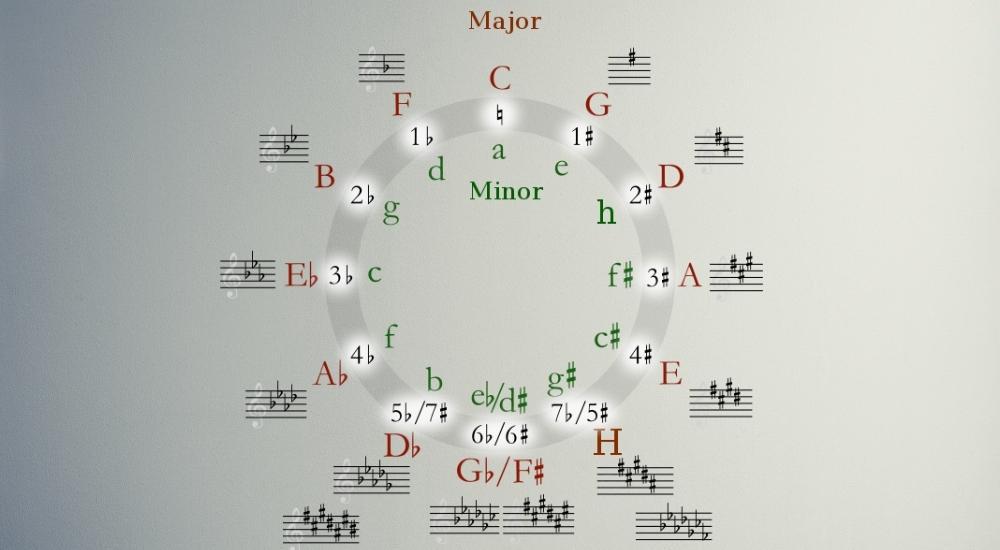
This circle of fifths has G and F on either side of C. The reason both notes of the three-chord trick are on either side of C is that these roots are a 4th and 4th apart.
A fifth is a musical interval five notes away from the other note. You count the first note when figuring this out. So we take C and go down five notes starting from C. We get C, B, A, G, and reach F.
Try going up from C. We get the notes C, D, E, F, and G which is our note one-fifth away from C going up. F is a fifth from C going down. Fifths are a powerful driving force in musical composition.
That’s why fifths are so useful. Knowing the circle of fifths is a pretty good starting piece of knowledge for any musician.
How To Use The Three Chord Trick In Any Key
Learning how to use the three-chord trick is incredibly simple and not hard at all. Especially if you understand what’s going on in the Circle of Fifths which, as I said a moment ago, is one of the most useful and informative tools in all of music theory as this video points out.
![Circle of Fifths - What is the Three Chord Trick [ANSWERED]](https://producersociety.com/wp-content/uploads/2022/04/Circle-of-Fifths-What-is-the-Three-Chord-Trick-ANSWERED.jpg)
To use the three-chord trick, pick a key from the Circle of 5ths, then select the letter to the left and to the right of that key. This will give you the I-IV-V. This is because the Circle of 5ths moves by fourths when going counter-clockwise and by fifths when moving clockwise.
1) Pick a Key Signature
Look at your circle of fifths to pick your key signature. We’re picking C as our example but the method I’ll detail below works for any key. These chords are the main structural chords in music played in your key.
2) Find The I-IV-V Progression From The Key Signature
One great way to find the I-IV-V progression is to think of your scale in terms of numbers which I also demonstrated at length in my article on the double harmonic major scale. Finding this chord progression is as easy as assigning numbers to each scale degree in order.
For a C major, C is 1, D is 2, E is 3, F is 4, G is 5, A is 6, and 7 is B. Next, we can count to 1, 4, and 5 to find this progression. If you gave each scale degree a number from 1-7, you get C, F, and G for your progression if you’re trying to find the I-IV-V.
This is true for C, but remember that the chord qualities for C, F, and G are different in other keys. Make sure you number your scale degrees in ascending order.
3) Use The I-IV-V From That Key Signature In A Song
Now that we have the chords spelled, we need to use them in a song. A good rule of thumb is to have them in order to establish your key, then go to the I chord. Going to the I chord reinforces the key. You can also experiment with the order but starting and ending on the I chord is a common practice.
You might also make your IV chord the main chord of your bridge section. Also, consider how long your chord is played. Is it just one or two measures? Just two beats?
This concept is called harmonic rhythm and can also shape the feel of your song. You have a lot of creative room to work with that because the song you make is yours. Try it, and see what works best for you and use my guide on how to write a song in just 10 minutes if you need help.
Another thing to consider is your melody notes. You wouldn’t want an F over a C chord, or a B over your F chord. Of course, if you are being jazzy or your notes are passing tones then consider that too. In other words, you want to experiment with what is called “chord tones.”
You guessed it, these are notes of the chord. And a non-chord tone is a note that isn’t a part of the chord. Playing the 3rd of the chord is usually going to sound pretty good.
Use your ears to determine what’s best. Matching tones on the strong beats of your song are also important for your music to be convincing. If you think about it, music is just one big chord or one big scale, at least in Western music theory.
Play notes of the scale over the chords that also come from that scale to experiment and see what you like. This is one reason I recommend getting a Looper Pedal like the BOSS RC-5 Loop Station.
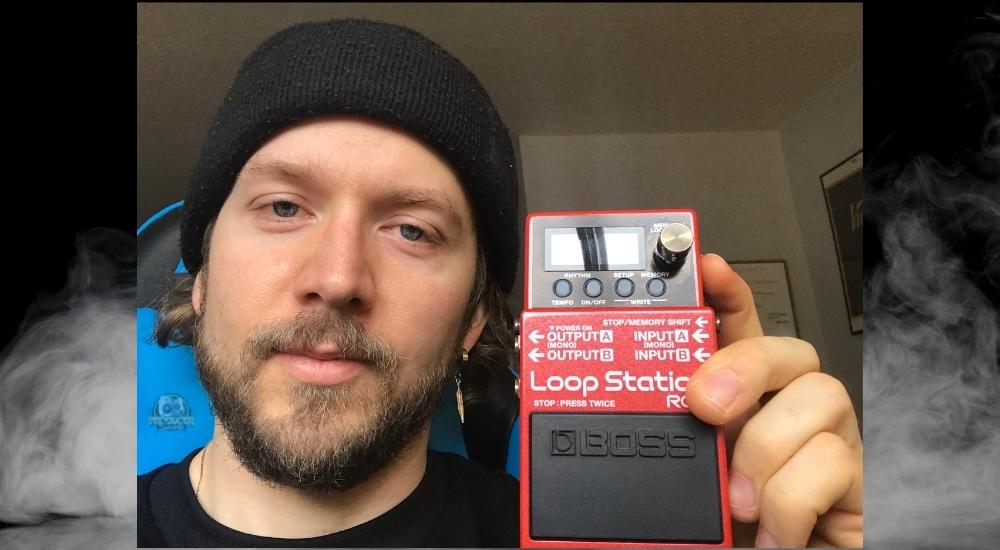
As I said in my guide to learning music theory for beginners, this is a great tool for learning to understand what you’re actually doing in terms of melody and harmony. As a matter of fact, I think it’s easily one of the best.
Tip
Another tip I’ll share is that you can actually use any chords that are close to each other in the Circle of 5ths, and they’ll sound good. For example, if you pick F major, D Minor, C Major, A Minor, G Major, and E Minor, and you play all of those chords, they’re going to sound alright.
The three chord trick gets even better because you can even use it for the natural minor scale which I’m going to talk to you about now. Although, it’s going to sound quite a bit different.
The Three Chord Trick Will Work For a Natural Minor Scale
![A Minor - What is the Three Chord Trick [ANSWERED]](https://producersociety.com/wp-content/uploads/2022/04/A-Minor-What-is-the-Three-Chord-Trick-ANSWERED.jpg)
The only thing that changes is the quality of the chords. In natural minor, this makes the chords minor instead of major. Minor chords sound awesome too.
They’re very familiar to any listener, and they work very well together harmonically. Knowing the difference between major and minor will inform how you want to use the three-chord trick.
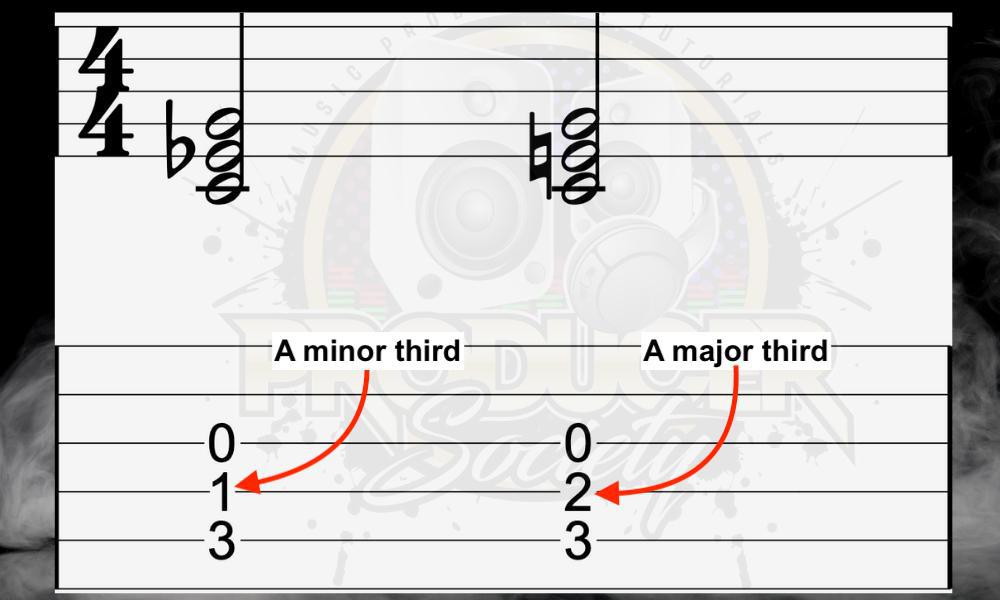
The difference between a minor and major chord, in simple terms, is that a major triad has a major 3rd interval whereas a minor triad has a minor third interval. A minor interval is a more narrow music interval compared to the major interval, which is just one semi-tone wider.
If your sound is darker, you might choose a minor chord instead. And if you’ll recall what I said earlier, many number one hit songs nowadays actually use minor keys instead of major keys.
Academic studies such as this one prove we have been moving away from major chord progressions slowly across time.
I think a big part of this phenomenon has to do with how cheesy major chord progressions have become. This is just my opinion, of course, but a I-IV-V can be very cliché and it makes sense why people have moved away from it in recent years.
How To Use The I-IV-V In A Minor Key Signature (i-iv-v)
Minor keys can be intimidating for some. The process for using the three-chord trick is pretty much the same.
Make sure to note that the roman numeral system for minor chords are lowercase letters to represent the minor sound. This helps anyone looking at the roman numerals know whether a chord is major or minor.
![Circle of Fifths (Minor) - What is the Three Chord Trick [ANSWERED]](https://producersociety.com/wp-content/uploads/2022/04/Circle-of-Fifths-Minor-What-is-the-Three-Chord-Trick-ANSWERED-1.jpg)
To use the three-chord trick with a minor key, pick one from the Circle of 5ths, then select the lower-case letter to the left and to the right of that key. This will give you the i-iv-v because the Circle of 5ths moves by fourths when going counter-clockwise and by fifths when moving clockwise.
1) Pick a Minor Key Signature (Lower-Case Letters)
Let’s pick C minor. Our C Minor scale looks like this: C D Eb F G Ab Bb and C. We have the same notes for the chord roots but they are now all minor. You can also look on your circle of fifths to find a different scale, just note that your scale will not have the same notes like the one mentioned above.
2) Find The i-iv-v Progression From The Key Signature
Here, our progression is C minor, F minor, and G minor. Remember to use the numbering system as discussed earlier. Number each scale degree 1-7 in ascending order, and you’ll be good to go.
One small thing that’s interesting about progressions in minor is that there is one chord you can change but it’s not natural minor anymore.
You can make your G chord major only with a B natural but you can also use Bb for a minor v chord. Changing to B natural makes the V chord major in minor, and there is a name for this scale: Harmonic Minor.
However, if you just want to stick to the natural minor, that’s fine too. It will sound great regardless because these sounds are consonant. Consonance is how harmonically pleasing a sound is. Your V chord will be the tensest in the progression but it will always go back to the “i” chord.
The “i” chord is always a good chord to land on and should be the beginning chord (at least if you’re new). It could also be your last chord.
As you progress musically, you can use other chords, but the “i” is a good choice for someone who’s familiarizing themself with how to use these techniques.
3) Use the i-iv-v From That Key Signature In A Song
Again, consider the harmonic rhythm of your song. Aside from that, there are some key differences when using this chord progression in a minor key. Eb, which is the third of your “i” chord will really clash with the v chord.
Although tension is good, it’s also important to consider this when writing your progression and melody.
Ab from your F minor chord will also clash with the v and “i” chord. Make sure to pay special attention to the different thirds of each chord in minor to avoid unwanted tensions. It is so important you use your ear for this.
Another thing to consider is that melody notes that are tense can be difficult for a singer to sing. Pay careful attention when crafting your melody, especially for the sake of your musicians.
Important Things to Note About Using the 3-Chord Trick
1) These Are Guidelines Not Rules
There are no rules in music theory, there are only common ways of doing something. So keep that in mind. All of the tactics, tips, and tricks in here are to provide a jumping-off point, so to speak, for people who are trying to learn how to write songs.

 Written By :
Written By :